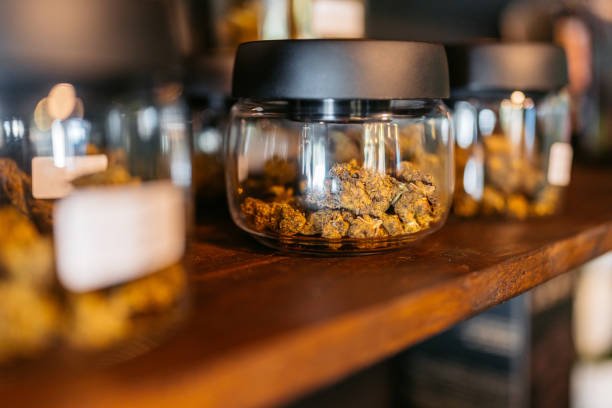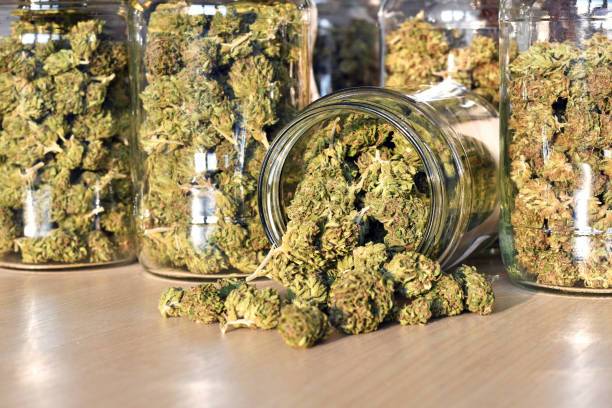Package and Label Your Cannabis Product: A Comprehensive Guide to Labeling Requirements
02-25-2025
Understanding how to package and label your cannabis product is crucial in the ever-evolving cannabis industry. From cannabis product to thc, there are specific labeling requirements and regulations you must adhere to. This article serves as a comprehensive guide to the requirements for cannabis packaging and labeling requirements, ensuring you stay compliant and protect your brand. We will delve into the specifics, from child-resistant packaging to warning labels, to help you navigate the complexities of the legal cannabis market.
Why are Cannabis Product Packaging and Labeling Requirements so Important?
The cannabis industry is tightly regulated for several critical reasons. The packaging and labeling requirements for any cannabis product are not just about aesthetics; they directly impact public health and safety.
- Consumer Safety: Clear and accurate labeling requirements protect consumers by providing crucial information about the cannabis product, including thc content, potential health risks, and proper usage.
- Preventing Misuse: Stringent packaging and labeling requirements are vital to prevent accidental ingestion, especially by children. Child-resistant packaging is a non-negotiable standard.
- Compliance and Legal Standing: Adhering to the labeling requirements set forth by governing bodies, like the FDA in some cases, is essential for staying compliant with state and federal laws. Non-compliance can lead to severe penalties.
- Building Brand Trust: Transparent and responsible labeling builds consumer trust and reinforces your brand’s commitment to quality and safety.
- Control: Cannabis control requires that the products are properly labeled to track its journey from seed to the consumer.
The cannabis industry needs to take the package and label requirements seriously.
What are the Core Labeling Requirements for Cannabis Products?
Regardless of the type of cannabis product, there are core labeling requirements that must be met. These ensure that consumers have access to essential information to make informed decisions.
- Product Name and Type: Clearly identify the product and its form (e.g., flower, edible, concentrate).
- Net Weight or Volume: Include the net weight or volume of the cannabis product. This helps consumers understand the quantity they are purchasing.
- Cannabinoid Content: Display the thc (delta-9-tetrahydrocannabinol) and CBD (cannabidiol) content in milligrams (mg) or as a percentage. Include total thc and cannabinoid content.
- List of Ingredients: Provide a comprehensive list of ingredients, including all additives, flavorings, and any potential allergen information.
- Manufacturer Information: Include the name and address of the manufacturer or distributor.
- Batch or Lot Number: This is critical for tracking and traceability in case of product recalls.
- Health Warnings: Comply with all required health warning messages, typically related to the potential health risks associated with cannabis use.
- Cannabis Symbol: Where required, the cannabis symbol must be present and visible on the package.
- Serving Size and Dosage Information: This is especially important for edible cannabis products to guide consumers on proper consumption.
These are fundamental elements, but specific requirements may vary depending on the state. Always refer to the most up-to-date cannabis regulations in your region.

How to Ensure Child-Resistant Packaging Compliance?
Child-resistant packaging is non-negotiable to protect children from accidental ingestion of cannabis products. The packaging must meet stringent requirements to minimize the likelihood that children can open it.
- Design Standards: Ensure the packaging design meets the specific standards outlined by the FDA and/or state regulations.
- Testing and Certification: Packaging must undergo rigorous testing by an accredited laboratory to demonstrate that it is, in fact, child-resistant.
- Types of Child-Resistant Features: This may include squeeze-and-turn caps, push-and-turn caps, and other mechanisms designed to be difficult for children to operate.
- Secure Closure: The package must reliably maintain its child-resistant properties throughout the product's shelf life.
- Packaging must be opaque or opaque to reduce temptation for children.
- Make sure the package and label follow all packaging and labeling requirements.
- The package and label must also contain the cannabis product information.
- The products must keep out of reach of children.
Remember that the goal is to make the packaging difficult, not impossible, for children to open. Cannabis products must also not be attractive to children.
What are the Specific Packaging and Labeling Requirements for Edibles?
Edible cannabis products pose unique labeling requirements due to the nature of their consumption and the potential for over-consumption.
- Accurate Dosage: The most crucial aspect is accurate and consistent dosing information. The package must clearly state the mg of thc and serving size.
- Serving Size: Establish a clear and defined serving size to help consumers understand the amount of thc they are consuming.
- Individual Servings: Edible cannabis products must often be packaged in individual servings, or the package must provide clear instructions on how to divide the product into equal servings.
- Warning Statements: Include specific warnings about the delayed onset of effects and the dangers of consuming too much at once.
- Resemble No Product: The edible cannabis products must not resemble any commercially available food item, candy or food, which could be attractive to children.
- Nutrition Facts: Follow labeling for food guidelines, providing nutrition facts that are similar to those required for food product.
- Consider including display formats about how the product information is intended to be displayed on the label.
- The regulations require all the product information must appear on the label.
- Also, the product is intended to be consumed by the adult use audience.
Ensuring compliance with these specific requirements is key to the safety of cannabis products.
What are the Considerations for Plain Packaging of Cannabis Products?
Plain packaging, also known as standardized packaging, is becoming increasingly common in some regions and can significantly influence the cannabis package design.
- Purpose: The primary goal of plain packaging is to reduce the appeal of cannabis products, particularly to young people, and to minimize brand promotion.
- Uniformity: The packaging typically restricts the use of logos, colors, and other design elements that could be seen as attractive or suggestive.
- Restrictions: Colors may be limited, and the cannabis product name might be presented in a specific font and size.
- Mandatory Information: Even with plain packaging, all mandatory labeling information, including health warnings and thc content, must be prominently displayed.
- Opaque Packaging: This is often an element of plain packaging, making the product less visible.
The transition to plain packaging represents a shift in focus from marketing to public health. Staying informed about these regulations is essential for cannabis businesses.
How to Handle Health Warnings on Cannabis Product Labels?
Health warning messages are a critical component of cannabis product labeling, and they are designed to inform consumers about the potential risks associated with consumption.
- Mandatory Language: Be aware of the specific wording and placement requirements for warning statement; these are often mandated by the state.
- Prominence: Warning statement must be clear, concise, and prominently displayed on the package, often in a specific font size and color.
- Variety: The warning statement may vary depending on the product type and the potential risks associated with its use.
- Examples of Warnings: Common warnings include those about the risks of impairment, the potential for addiction, and the dangers of use during pregnancy or while operating machinery.
- The warning statement also often includes information to keep out of reach.
- The warning statement is always displayed with other labeling information.
Failure to include and properly display required health warning messages can lead to significant penalties. Always prioritize compliance.

What Information Must be Displayed on the Display Panel of a Cannabis Package?
The display panel, the most visible part of the cannabis package, is crucial real estate for conveying essential information to consumers.
- Product Name and Type: The name of the product and its form (e.g., flower, concentrate) must be clearly visible.
- Brand Logo: The brand logo, if permitted by regulations, must be present.
- Net Weight or Volume: Display the net weight or volume.
- Total Cannabinoid Content: The thc and CBD content in mg of thc or as a percentage.
- Cannabis Symbol: The state-required cannabis symbol, if applicable.
- Warning Statements: The warning statement must be displayed.
- Keep Out of Reach: This statement, in a standard font, must be present.
Ensure that the display panel is well-designed, clear, and easy to read.
What are the Labeling Requirements for Topical Cannabis Products?
Topical cannabis products, such as creams, lotions, and balms, have unique labeling requirements that reflect their intended use and potential health effects.
- Ingredient List: A comprehensive list of ingredients must be included, similar to those required for cosmetic or personal care products.
- Cannabinoid Content: Display the cannabinoid content, including thc and cannabidiol (cbd) if present.
- Directions for Use: Provide clear directions for how to use the product, including the area of application and the frequency of use.
- Intended Use: Clearly state the intended use of the product (e.g., pain relief, skin care).
- Warning Statements: Include warnings about potential skin irritation, and advise against internal consumption.
- Display panel should show that the product is for external use only.
- If the product contains thc, all the standard labeling requirements must be in place.
Accurate and transparent labeling is vital to ensure the safe and effective use of topical cannabis products.
How to Stay Updated on Packaging and Labeling Regulations?
The cannabis industry is constantly evolving, and packaging and labeling regulations are subject to frequent changes. Staying informed is essential for maintaining compliance.
- Monitor Regulatory Agencies: Regularly check the websites of the FDA (where applicable) and relevant state or local regulatory agencies.
- Subscribe to Industry Publications: Sign up for newsletters and publications that provide updates on cannabis regulations and industry best practices.
- Attend Industry Conferences and Webinars: These events offer valuable insights into current and upcoming regulatory changes.
- Work with Legal and Compliance Experts: Consult with legal professionals specializing in the cannabis industry to ensure you are fully compliant with all applicable regulations.
- Regulations require that the labels must be clear, concise, and accurate.
- Make sure that the labels are in the format that the consumer can easily understand.
Proactive monitoring and adaptation are essential for success in the cannabis industry.
What are the Consequences of Non-Compliance?
Non-compliance with packaging and labeling regulations can result in severe penalties, including:
- Product Recalls: Non-compliant products may be subject to mandatory recalls, causing significant financial losses and reputational damage.
- Fines and Penalties: Regulatory agencies can impose substantial fines for non-compliance, which can be very costly for cannabis businesses.
- License Suspension or Revocation: In severe cases, repeated or significant violations of labeling requirements can lead to the suspension or revocation of a business's license to operate.
- Legal Action: Non-compliance can expose businesses to legal action, particularly if products cause consumer harm.
- Damage to Reputation: Non-compliance can damage a brand's reputation, leading to a loss of consumer trust and loyalty.
- The business cannot operate if it is not following requirements for cannabis products.
Compliance with cannabis regulations is not optional; it is essential for protecting your business, your consumers, and the public health.
Key Takeaways:
- Thorough package and label practices are crucial for consumer safety, compliance, and brand trust.
- Core labeling requirements include product name, thc content, ingredients, manufacturer information, and health warning messages.
- Child-resistant packaging is mandatory and must meet specific design and testing standards.
- Edible cannabis products require precise dosage information, serving sizes, and specific warning statements.
- Plain packaging aims to reduce the appeal of cannabis products and is becoming increasingly common.
- Clear and prominent health warning messages are essential for informing consumers about potential risks.
- The display panel must prominently display key information about the cannabis product.
- Topical cannabis products have specific labeling requirements related to ingredients, use, and warnings.
- Staying updated on evolving regulations is crucial for maintaining compliance.
- Non-compliance with packaging and labeling requirements can lead to serious penalties and legal action.
By diligently following these guidelines, you can ensure that your cannabis product meets all the requirements for cannabis and operates safely and successfully within the cannabis industry.








